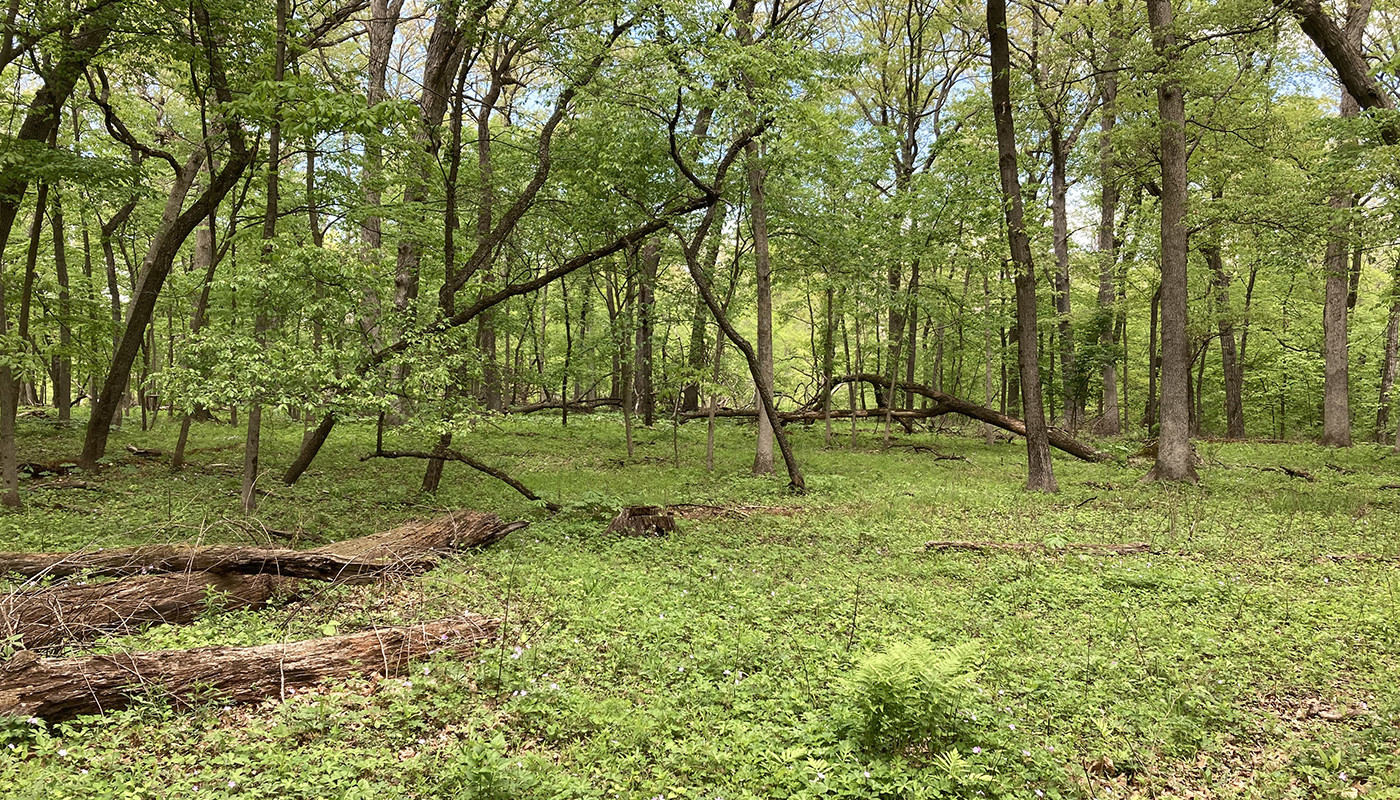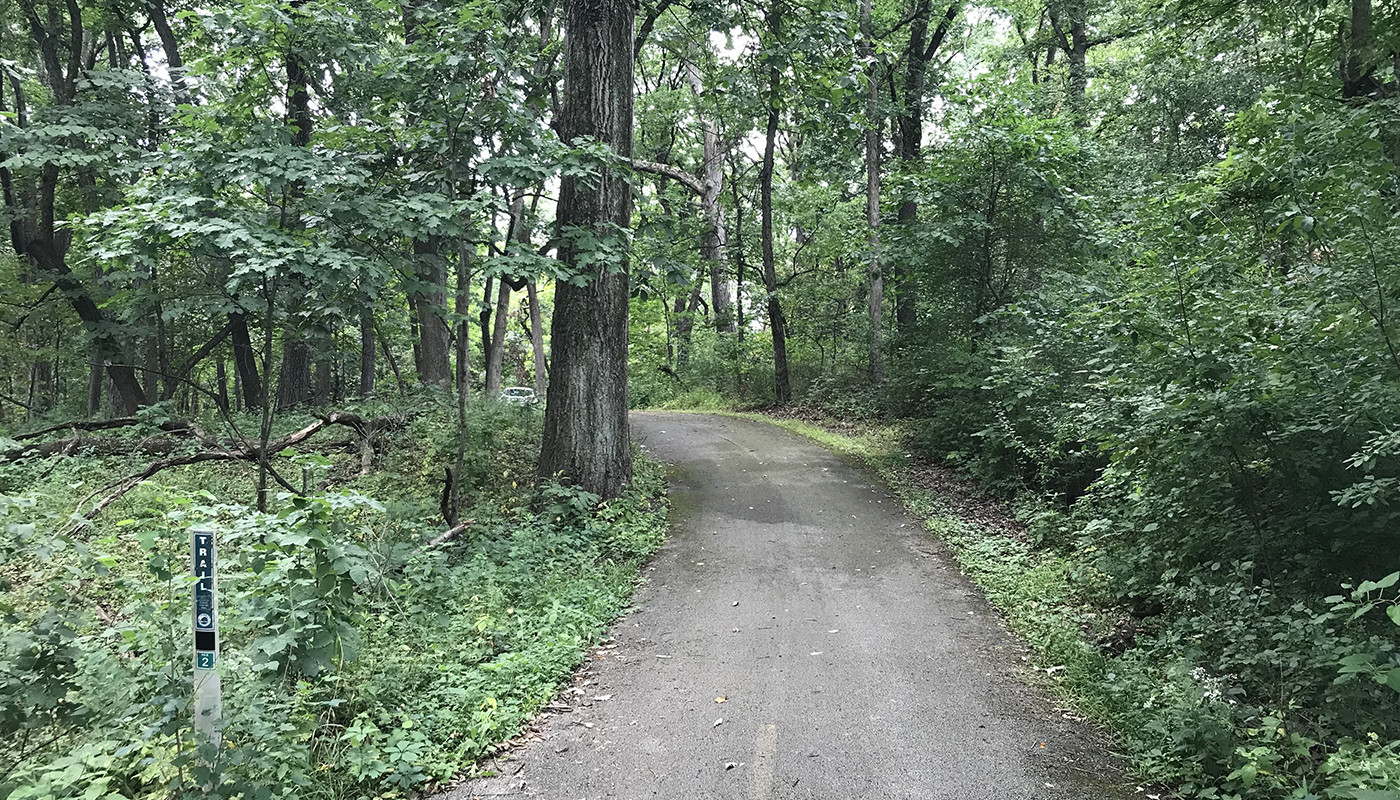In the fall of 2022, the Forest Preserves is starting a major ecological and hydrological restoration project to restore land and water within Forest Preserves property adjacent to Thorn Creek at Sauk Trail Woods, Schubert’s Woods and King’s Grove. This landscape was identified as a high priority in the Forest Preserve’s Natural and Cultural Resources Master Plan.
On this page:
Background
The program will have two main components:
- On-the-ground ecological restoration of 220 acres of floodplain and associated upland areas.
- Hydrologic restoration in the Thorn Creek watershed, including comprehensive planning to identify hydrologic impairments and solutions and implementing best management practices.
Ecological and hydrologic restoration creates healthy preserves that provide natural infiltration of rainwater to reduce flooding and soil erosion. In its current condition, portions of Sauk Lake are dominated by invasive brush and dense trees that create deep shade and bare soil that is suspectable to erosion. This erosion compounds over time creating in-stream sedimentation, channelization, downcutting and disconnection of the creek and its tributaries to the floodplains. As invasive brush and trees are removed, sunlight reaches the ground layer and vegetation flourishes. Ground layer vegetation intercepts rainwater and holds soil, reducing soil erosion and providing a filtering effect.
Many degraded areas can be restored through invasive species removal alone, but in some instances, targeted and more intensive repairs such as stream bank stabilization or re-meandering are required to repair natural hydrology. This project will also identify and implement targeted hydrologic repairs.
Healthy, restored lands provide open access to the residents of Cook County, including a more enjoyable and accessible user experience. Visitors to restored lands experience unobstructed vistas, a greater diversity of plants and animals, and opportunities to participate in outdoor recreational activities, which can have a positive impact on people’s mental and physical health.

Thorn Creek drains approximately 107 square miles from its headwaters in Monee to its discharge into the Little Calumet River in South Holland. The creek is divided into two reaches by an earthen dam in Park Forest, IL (along West 26th Street). The ARPA Riparian Restoration project will focus on the 1,151-acre Sauk Lake landscape, south of the Sauk Lake dam and north of the Cook County-Will County border at Steger Road (see ARPA Riparian Restoration Overview). The landscape consists of remnant oak woodlands on high ground, floodplain forests along Thorn Creek, Sauk Lake (an artificial lake) and former agricultural lands.
The Forest Preserves is in the process of restoring natural areas within the Sauk Lake landscape through invasive species removal and prescribed fires. This project will include the restoration of 220 acres adjacent to Thorn Creek.
Restoration Work

The Forest Preserves’ Resource Management Department is coordinating and managing this project. Under their direction, contractors will be thinning unnaturally dense native trees and removing invasive tree and brush species from approximately 220 acres of woodland and floodplain forest. This work will restore a diverse ground layer of plants, enhance native wildlife habitat, reduce erosion and allow the soil to absorb more stormwater.
During growing seasons, Forest Preserves staff and contractors will conduct follow-up vegetative and woody invasive species control. The Forest Preserves will also address areas of excessive erosion through hydrologic repairs. The restoration work is scheduled to start in the fall of 2022 and continue through 2026.
Funding
Funding is provided by the Cook County Department of Environment and Sustainability with dollars from the American Rescue Plan Act (ARPA). These funds are also funding a similar project along Tinley Creek. The projects further the mission of Cook County and the Forest Preserves and serves the broader ARPA objectives of protecting the health, safety and welfare of county residents through flood reduction and improved air and water quality.

